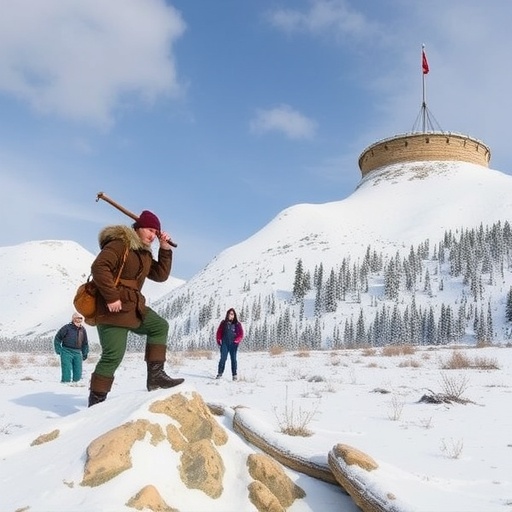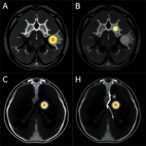
In a groundbreaking revelation that reshapes our understanding of the deep history of Northern Eurasia, a team of international researchers has leveraged ancient DNA to unravel the complex genomic tapestry underlying the origins of the Uralic and Yeniseian language-speaking populations. Published in Nature in 2025, this comprehensive genetic study analyzed genome-wide data from 180 ancient individuals spanning the vast and ecologically diverse forest and forest-steppe zones of North Eurasia. Their findings illuminate millennia of population interactions previously veiled by the mists of time, offering an unprecedented window into prehistoric cultural and migratory dynamics across one of the world’s most expansive and linguistically rich regions.
The study addresses a longstanding enigma: the genomic formation and historical migration patterns of groups speaking Uralic and Yeniseian languages. These language families occupy a unique place in linguistic typology and geography but have proved difficult to contextualize historically due to scant archaeological and written records. By employing cutting-edge paleogenomic techniques, the researchers were able to access the genetic blueprints of ancient hunter-gatherers and herders dating from the Early to Mid-Holocene, approximately 10,000 to 4,000 years before present, thereby tracing the subtle shifts and admixtures that shaped present-day populations.
A striking finding is the identification of a continuous genetic gradient among Early-to-Mid-Holocene hunter-gatherers stretching longitudinally from the Baltic region in the west, characterized by ancestries fully related to ancient Europeans, to the Transbaikal region in the east, marked by ancestries predominantly aligned with ancient East Asian groups. This gradient reflects an intricate pattern of gene flow and interaction that likely mirrors ecological and cultural transitions across the North Eurasian forest belt, suggesting sustained sociocultural connections over thousands of years.
.adsslot_pzs1gQCtv6{width:728px !important;height:90px !important;}
@media(max-width:1199px){ .adsslot_pzs1gQCtv6{width:468px !important;height:60px !important;}
}
@media(max-width:767px){ .adsslot_pzs1gQCtv6{width:320px !important;height:50px !important;}
}
ADVERTISEMENT
Intriguingly, the study reports that certain contemporaneous groups in Northeast Siberia diverge from this gradient. These “off-gradient” populations descend from a lineage that is identified as the primary ancestral source for Native American peoples. This ancestral connection not only corroborates existing theories about the peopling of the Americas from Siberia but also demonstrates later genetic admixture with populations from Inland East Asia and the Amur River Basin. This admixture resulted in two genetically distinct yet related populations that expanded during the Late Neolithic to Bronze Age periods, coinciding with a major realignment and collapse of previous population structures.
These two populations, designated Cis-Baikal Late Neolithic–Bronze Age (Cisbaikal_LNBA) and Yakutia Late Neolithic–Bronze Age (Yakutia_LNBA), exhibit remarkable cultural and linguistic associations. Cisbaikal_LNBA ancestry is strongly linked to Yeniseian-speaking groups and populations historically intermingled with them. Conversely, the Yakutia_LNBA lineage is traced to migrations that align closely with the spread of prehistoric Uralic-speaking communities. This geographic and temporal differentiation of ancestral sources offers new insights into the dispersal routes and cultural developments underpinning these linguistically distinct groups.
Central to these migratory narratives is the role played by the Yakutia_LNBA population, which is reported to have dispersed westward from the Lena River Basin approximately 4,000 years ago. This westward movement penetrated the Altai-Sayan mountainous region and further infiltrated West Siberian communities, which are archaeologically associated with the Seima-Turbino phenomenon. The Seima-Turbino complex is renowned for its advanced bronze metallurgy, including sophisticated casting techniques and projectile points, which spread rapidly across a vast trans-Eurasian area during the Bronze Age.
The study meticulously characterizes the 16 ancient individuals from the Seima-Turbino context included in the dataset, revealing a level of genetic diversity that underscores complex population interactions. These individuals not only harbor ancestry components from the Yakutia_LNBA population but also carry genetic signatures linked to Indo-Iranian pastoralist groups and diverse hunter-gatherer populations. This genetic mosaic strongly supports a scenario in which both cultural transmission and population migrations were instrumental in catalyzing the Seima-Turbino phenomenon’s explosive spread.
Such findings demonstrate that the dissemination of technological innovations, such as metalworking techniques, in prehistoric Eurasia was not a simple matter of cultural diffusion but was accompanied by significant human mobility and intergroup mixing. This complex interplay of migration, admixture, and cultural exchange laid a foundational role in shaping the ethno-linguistic landscape of the region, particularly in terms of facilitating the initial dispersal of early Uralic-speaking communities.
Moreover, the genetic data provided nuances to previous archaeological interpretations, revealing a dynamic sociopolitical environment where diverse groups intermingled. These interactions were likely mediated by ecological exigencies of the forest and forest-steppe zones, which fostered contacts among hunter-gatherers, agriculturalists, and pastoralists over millennia. The genetic continuity and turnovers documented in this study thus paint a vivid picture of North Eurasia as a crucible of cultural and genetic innovation during the critical transition from the Neolithic to the Bronze Age.
This research also contributes to the broader debate on how prehistoric languages and cultures spread across Eurasia. By anchoring linguistic histories to concrete genetic evidence and precise chronological frameworks, it moves beyond purely linguistic or archaeological inference. It substantiates the hypothesis that the Uralic and Yeniseian language families have deep-seated prehistoric roots shared with specific ancient populations linked to distinct genetic ancestries and migration events.
Furthermore, the identification of a genetic continuity from the Early Holocene populations to Bronze Age groups allows researchers to trace long-term demographic trends, including expansions, contractions, and admixture events shaped by climatic shifts, technological innovations, and socio-economic transformations. This multi-layered approach enriches our understanding of human adaptation and cultural evolution in one of the most climatically challenging and geographically expansive regions on Earth.
In sum, this study exemplifies the power of ancient DNA research to reconstruct the intertwined narratives of genetics, culture, and language across millennia. By dissecting the genome-wide data from ancient individuals across North Eurasia, the researchers have rewritten a significant chapter in the prehistory of Uralic and Yeniseian peoples. The sophisticated analytical framework and high-resolution genetic insights set a new standard for future paleogenomic investigations into complex prehistoric population dynamics.
As ancient DNA technology continues to advance, further research will likely refine and elaborate these findings, linking genetic shifts more intricately with archaeological records and linguistic phylogenies. This interdisciplinary synergy promises to illuminate the prehistoric threads that wove together the diverse cultural fabric of Eurasia, enhancing our comprehension of human history on a global scale.
—
Subject of Research: The genomic formation and prehistoric migration patterns of Uralic and Yeniseian language-speaking populations in North Eurasia, focusing on ancient DNA evidence from the Early to Late Holocene hunter-gatherers and Bronze Age communities.
Article Title: Ancient DNA reveals the prehistory of the Uralic and Yeniseian peoples.
Article References:
Zeng, T.C., Vyazov, L.A., Kim, A. et al. Ancient DNA reveals the prehistory of the Uralic and Yeniseian peoples. Nature (2025). https://doi.org/10.1038/s41586-025-09189-3
Image Credits: AI Generated
Tags: ancient DNA researcharchaeological context of Uralic and Yeniseian languagescultural interactions in ancient Eurasiaecological zones of North Eurasiagenetic analysis of ancient populationsgenomic studies of language familieshunter-gatherer ancestryNorthern Eurasia population dynamicspaleogenomic techniquesprehistoric migration patternsUralic language originsYeniseian language history



